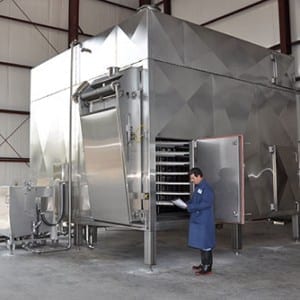
Responsibility for ensuring the safety of processed foods ultimately rests with food processors. HACCP (Hazard Analysis and Critical Control Point) principles state that food processors must follow a systematic way of identifying food safety hazards and making sure that they are being controlled day-in, day-out. While this principle has been willingly accepted and practiced by food processors, one of the primary challenges is in maintaining sanitary secondary operations in the production line, after a protein (beef, poultry or seafood) is cooked. For example, slicing, slitting, washing, conveying and packaging. When a protein leaves an oven it is free of pathogen and bacteria — the processing of high-temperature cooking takes care of that. However, risks of contamination begin to rise after the product begins to cool or, in some cases, after it has been chilled. Because many processing lines run for 16 consecutive hours, the opportunity exists for bacteria growth throughout the day. Unless secondary equipment is sanitized properly at the necessary intervals, pathogens and other bacteria can build up on this equipment and contaminate product as it moves down the line. Pathogens can lead to final products that present a public health risk and bacteria can dramatically reduce shelf-life. Going above and beyond In meeting these food safety challenges post cooking, it is critical to understand the relationship between food processing equipment manufacturers and food processors. As a global manufacturer of thermal food processing equipment, customers look to Unitherm Food Systems for solutions to all kinds of thermal processing challenges including grilling, roasting, cooking, pasteurizing, and chilling. Sometimes those solutions include collaboration with manufacturers of other specialized equipment. Unitherm recently faced such a challenge when founder and chairman David Howard mapped out an innovative solution that could prevent the growth of pathogens and bacteria that occurs on slitting equipment […]



Leave a Reply
You must be logged in to post a comment.